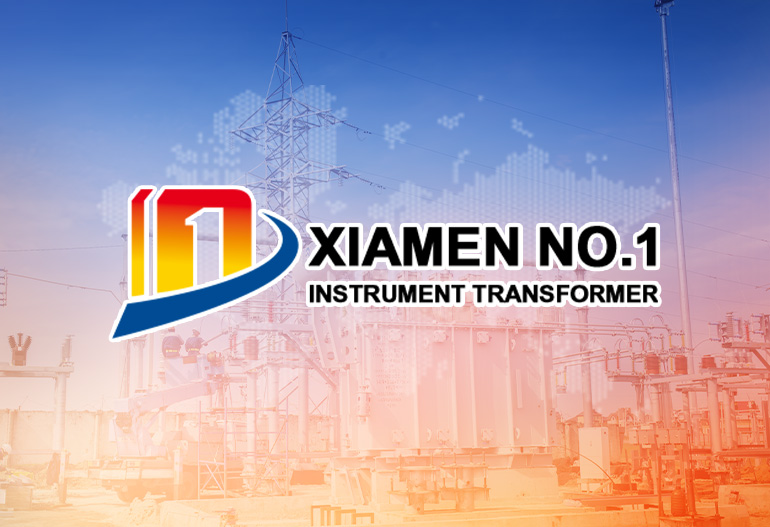
News
Current Transformers in High-Voltage Transmission Lines
The Critical Role of CTs in High-Voltage Transmission
Protection: Enabling rapid detection of faults (e.g., short circuits, overloads) by feeding accurate current data to protective relays, which trigger circuit breakers to isolate faulty sections and prevent cascading failures.
Metering: Providing precise current measurements for billing, load management, and grid efficiency analysis.
Monitoring: Supporting real-time grid surveillance, including current waveform analysis, harmonic detection, and thermal monitoring to ensure stable operation.
Control: Facilitating automated grid control systems, such as those regulating power flow or responding to voltage fluctuations.
Design Considerations for High-Voltage Transmission Line CTs
1. Insulation Systems
Oil-Immersed Insulation: Traditional and widely used, these CTs encase the core and windings in mineral oil, which acts as both insulator and coolant. The oil is sealed in a metal tank, often with paper or pressboard barriers to enhance dielectric strength. Suitable for voltages up to 765 kV, they offer excellent thermal stability but require maintenance (e.g., oil testing for moisture or contamination).
Gas-Insulated (SF₆): These use sulfur hexafluoride (SF₆), a highly effective insulating gas, in a sealed metal enclosure. SF₆ CTs are compact, lightweight, and ideal for space-constrained environments (e.g., indoor substations). They perform well at voltages up to 1,200 kV but require careful handling of SF₆ (a potent greenhouse gas) and hermetic sealing to prevent leaks.
Dry-Type Insulation: Using epoxy resin or polymer materials (e.g., silicone rubber) to insulate windings, these CTs are maintenance-free and environmentally friendly. They are common in medium-to-high voltage applications (up to 245 kV) but may struggle with heat dissipation at very high currents.
2. Core and Winding Design
Core Materials: To maintain accuracy at high currents, cores are often made of grain-oriented electrical steel (GOES) or amorphous metal, which minimize hysteresis and eddy current losses. For transient performance, some CTs use “air-gapped” cores to resist saturation during fault currents.
Winding Configuration: HVTL CTs are typically “busbar” or “through-type,” where the high-voltage transmission line itself acts as the primary winding (a single turn), eliminating the need for a separate primary conductor. This design reduces insulation complexity and lowers losses. Secondary windings are multi-turn, wound around the core to achieve the desired turns ratio (e.g., 2000:5 for a 2000 A primary).
3. Transient Performance
Extended Accuracy Limit Factors (ALF): For protection CTs, ALF (e.g., 20, 30) specifies the maximum multiple of rated current at which the CT remains accurate. A 5P30 CT, for example, allows a 5% composite error at 30× rated current.
Low-Flux Density Cores: Designed to avoid saturation during transients by operating at lower magnetic flux levels.
Damping Circuits: External resistors or capacitors to suppress oscillations in secondary currents caused by transients.
Technical Challenges in HVTL CT Applications
Electromagnetic Interference (EMI): HVTLs generate strong magnetic fields that can induce noise in CT secondary circuits, corrupting measurements. Shielding (e.g., grounded metal enclosures) and twisted-pair secondary wiring mitigate EMI.
Thermal Management: High currents and ambient temperatures (e.g., in desert or tropical regions) cause heating. Overheating degrades insulation and increases resistance in windings, reducing accuracy. Oil-immersed CTs use convection for cooling, while dry-type CTs rely on heat sinks or forced air.
Insulation Aging: Over time, insulation materials degrade due to temperature cycles, moisture, or chemical exposure. This increases the risk of partial discharge (PD)—localized electrical breakdown—that can escalate to full insulation failure. Online PD monitoring systems (using sensors or UHF detectors) are increasingly used to track insulation health.
Mechanical Stress: HVTLs experience mechanical forces from wind, ice, or conductor movement, which can strain CT mounting hardware. Vibration-resistant designs (e.g., flexible bushings) prevent structural damage.
Integration with Smart Grids and Digitalization
Digital Current Transformers (DCTs): Replacing traditional analog CTs, DCTs use optical sensors (e.g., Faraday effect-based fiber optics) or Hall-effect devices to measure current directly, converting signals to digital data for transmission. They offer:
Wider bandwidth (capturing harmonics and transients more accurately).
Immunity to EMI and saturation.
Integration with digital protection relays and SCADA systems via Ethernet or IEC 61850 protocols.
Condition Monitoring: IoT-enabled CTs include sensors for temperature, humidity, and PD, sending data to cloud platforms for predictive maintenance. This reduces downtime by identifying issues (e.g., overheating, insulation degradation) before failure.
Standards and Compliance
IEC 61869-2: Specifies requirements for current transformers, including accuracy classes (e.g., 0.2 for metering, 5P for protection), insulation levels, and test methods.
ANSI/IEEE C57.13: Governs CTs for North American markets, with accuracy classes (e.g., 0.3, C20) and guidelines for transient response.
IEC 60076: Covers insulation coordination for high-voltage equipment, ensuring CTs withstand lightning and switching surges.
Maintenance and Lifespan
Periodic Testing: Insulation resistance tests (using megohmmeters), ratio error checks, and phase displacement measurements verify accuracy. For oil-immersed CTs, oil sampling tests for moisture, acidity, and dielectric strength.
Visual Inspections: Checking for corrosion, loose connections, or damage to bushings.
Online Monitoring: Continuous tracking of temperature, PD, and secondary current quality using sensors, enabling early fault detection.
Conclusion

XUJIA
I graduated from the University of Electronic Science and Technology, majoring in electric power engineering, proficient in high-voltage and low-voltage power transmission and transformation, smart grid and new energy grid-connected technology applications. With twenty years of experience in the electric power industry, I have rich experience in electric power design and construction inspection, and welcome technical discussions.

